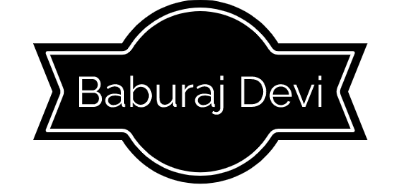What is Search Engine Optimization (SEO) ?
Search
Engine Optimization (SEO)
Search
Engine Optimization or SEO is the process of getting organic traffic to a
website through search engines like Google, Bing or Yahoo. The primary
objective of SEO is to increase traffic from free or natural search results in
such a way that it gets ranked on the first page of a search engine.
On-page SEO
Measures
taken directly in the website to improve its search ranking position is called on-page
SEO. Strategies like usage of keywords and Meta description in content, HTML
code, alt tags and title tags are on-page SEO activities.
Technical optimization
For technical
optimization of a website the steps taken include:
- Increasing server speed as it would reduce the load time of website.
- Efficient source code to allow easy functioning for Google bot while indexing the site.
- Unique IP address so that Google and other search engines consider the website as unique.
Content
Content for
on-page SEO refer to visible elements on the screen - like texts and images. But
invisible elements like alt-tags or Meta information are also part of content.
- Text optimization that involves creating text woven around keywords and a combination of terms.
- Structural text elements using paragraphs, bullet lists, heading tags and formatting (bold/italicize) text elements or words.
- Using images that optimize the content elements as images rank higher in Google’s search.
- Videos also rank higher in Google search
- Meta-tags, including Meta titles and Meta descriptions, play an important role in impacting a website’s appearance in the search engine results pages.
Internal
links and structure
Internal
links are useful as they guide the bot’s visit to a website and optimize
navigation for users.
- Logical structure with not more than four levels, so that a bot is able to reach and crawl all the sub-pages of a domain.
- Internal linking determines effectiveness of keywords for users trying to navigate around a website and also for the search engine crawlers.
- Canonization involves strategies to avoid duplicate content by using existing canonical tags and by assigning pages that have “noindex” attribute.
- URL structure should be search-engine-friendly, logically related and of optimum length.
- Pages with irrelevant content need to be tagged with robots metatag “noindex” to exclude it from Google search results.
Design
Web design with
easy user feature is the norm today. Functionality of a page is more important
than using complex graphics (involving use of features like Flash) so simple
alternatives are used on the page.
- Desktop content of website is adjusted to make it easily accessible and viewable on mobile platforms like smartphones or tablets.
- File sizes should not be too large as it increases the page load time. On-page optimization requires that SEOs and graphic designers maintain file sizes that are as small as possible.
- Elements like Call-to-Action button will stimulate users to interact/engage with the website.
Off-page SEO
Methods used outside a website to
improve its ranking in search engine page are called off-page SEO. It involves
link building through other sites, as well as promotional methods like blogs
and article submissions.
Objectives of off-page SEO are:
- Increase rankings of website in the search engine page, meaning more traffic to the domain.
- Increase in Page rank (i.e. between 0 and 10) to raise the importance of the website in Google’s view.
- Greater exposure to website due to higher ranking leading to more links, visits and social media mentions.
- Establish trustworthiness for website to increase ranking, in view of the fact that Google uses the concept of Expertise, Authority and Trustworthiness (E-A-T) to rank domains. Expertise, authority and trustworthiness are attributes that have to be acknowledged by other related websites through links pointing to a domain.
The three main methods
of off-page SEO are:
·
Link
Building
·
Social
Media Marketing
·
Brand
Mentions
Link
Building
When it comes to off-Page SEO
techniques, link building is considered to be very effective and is popular among
brand managers. Outside links to a website, from another website or blog is a
confirmation to the search engine that a page contains good information. Google
stresses that links pointing to a website have to be natural links, i.e. a
website owner or blogger adds a link to his/her website/blog naturally if
he/she likes or finds the linked website/blog.
Social
Media Marketing
Part of off-site SEO method,
social media marketing is another type of link building. Most links, to website
from social media sites, come under “nofollow”, but doesn’t mean that they have
no value. Mentions in social media are used as a factor in search engine
ranking, and brands are using their social media accounts to boost SEO.
Brand Mentions
Google prefers brands and ranks
their websites on top in the search result page. The reason for Google’s brand
preference is its emphasis on Expertise, Authority, and Trustworthiness. Brands
are seen as reliable and trusted by users, and are likely to provide better
user experience as per Google.
Brand mentions do not mean that
there is a link pointing to the website. It can be mentions of the brand in
articles, reviews, social media networks or other forums. These mentions are
picked up by Google crawlers and evaluated to create an accurate picture of how
a brand is perceived by people. Any off-page SEO strategy should include pursuing
positive mentions of the brand or products, and ensure that all negative or
misleading comments are addressed to promptly.











0 Comments